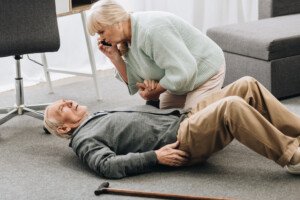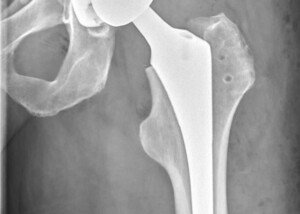
It’s not the actual broken bone itself that kills a hip fracture patient.
The high death rate is caused by the ripple effect that a broken hip generates.
When I logged onto my e-mail one day and saw the subject line of “Mom broke L hip,” my heart rate accelerated to perhaps over 140 bpm.
I thought, “This is it,” that this was what my mother would die from, not her heart disease.
She made a full recovery, getting past that 12 month grace period during which many hip fracture patients die.
“Of course the population of people who sustain fragility fractures of the hip (as opposed to young people who break their hip in motorcycle accidents) are elderly and at greater risk for mortality in general,” explains Barbara Bergin, MD, board certified orthopedic surgeon at and co-founder of Texas Orthopedics, Sports & Rehabilitation Associates.
“That being said, the one-year mortality rate for people who sustain these fractures is around 20-30%. It’s higher in some studies, depending on the cohort of patients!
“It’s a bad thing to happen to a person. It’s not just the risk of death. It’s also the risk of poor outcome and failure to return to your previous level of activity and independence.
“The highest risk is during the first year, and it tapers off after that.
“Better surgical technique, providing rigid fixation, and allowing more rapid mobilization and therapy is the key factor in the improved statistics.”
Bleak News for Elderly Hip Fracture Patients
A report in the Archives of Osteoporosis (Sept. 2017) reveals that the mortality rate within the 12 months following a hip fracture is high.
• Mortality and hospital data from four Australian states were linked.
• There were 9,748 patients at least 65.
• They were matched one-to-one on age, gender and residential postcode with a control group of uninjured people taken from an electoral roll.
• The hip fracture group had much worse survival rates in the 12 months following their injury when compared to the control group.
• The broken hip group were over 3.5 times more likely to die in that 12 month period.
• It was determined that in 72 percent of these cases, the hip fracture was likely a contributing factor.
Why Does Hip Fracture Increase Mortality So Much?
• A study in Osteoporosis International (Oct. 2016) named pneumonia as a leading cause.
The immune system is suppressed post-surgery. This, in combination with limited movement by the older patient due to depression, non-compliance or any other number of reasons, puts the patient at high risk for pneumonia.
• A small study in the Netherlands Journal of Medicine named the following other causes of death for hip fracture patients still in the hospital: stroke, acute heart failure, heart attack, intestinal bleeding and body-wide infection.
Mortality at some point after hospital discharge can be from a pulmonary embolism: when a blood clot (DVT) in the leg breaks away and travels to the lung.
The trauma from the surgery increases post-op DVT risk. Another risk for a blood clot is excessive bed rest at home.
Proactive family members are key to avoiding mortality once the patient is home.
This includes doing everything possible to prevent a second fall (which could be fatal) while the patient recovers.
Three Exercises to Help Prevent Brittle Bones that Can Lead to a Hip Fracture
“Weight-bearing exercises are the best way to prevent brittle hip bones,” says Monica Charlton, a senior exercise specialist and certified Silver Sneakers/personal trainer out of New Orleans.
“Squats, lunges and dumbbell step-ups will put stress on your hip bones in a way that increases bone density,” says Charlton. “Balance training on a balance pad is also helpful.”
Body Weight Squat

Shutterstock/LightField Studios
Balance Training

Start out with a hand or two on a countertop, and work on eliminating this assistance over time. Freepik.com, Racool_studio

Dr. Bergin is a general orthopedist, surgically and conservatively treating all manner of bone and joint conditions. She enjoys educating patients so they can emerge stronger than they were before their orthopedic injury or surgery.
 Monica Charlton’s personal training services include fitness/body composition assessments, nutrition planning, running programs and customized programs for clients with disabilities or injuries, as well as older and mainstream clients.
Monica Charlton’s personal training services include fitness/body composition assessments, nutrition planning, running programs and customized programs for clients with disabilities or injuries, as well as older and mainstream clients.
 Lorra Garrick has been covering medical, fitness and cybersecurity topics for many years, having written thousands of articles for print magazines and websites, including as a ghostwriter. She’s also a former ACE-certified personal trainer.
Lorra Garrick has been covering medical, fitness and cybersecurity topics for many years, having written thousands of articles for print magazines and websites, including as a ghostwriter. She’s also a former ACE-certified personal trainer.
.

























